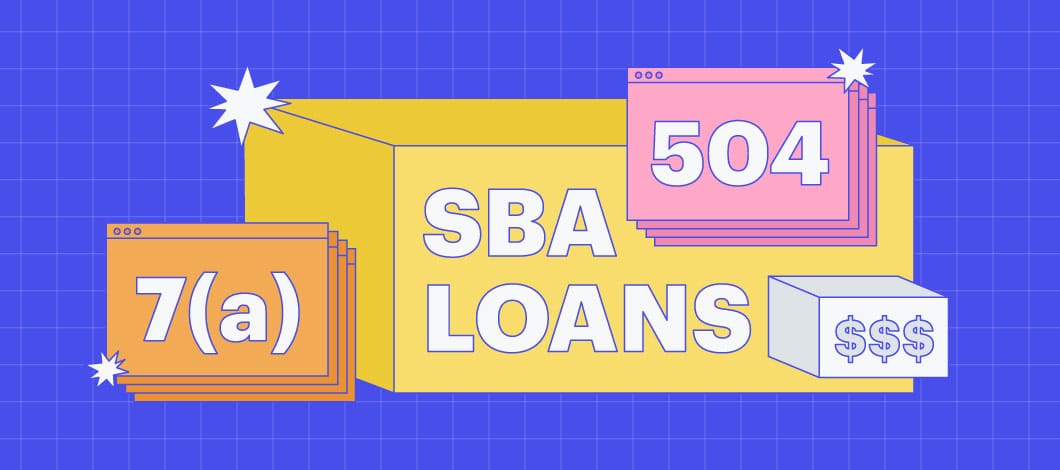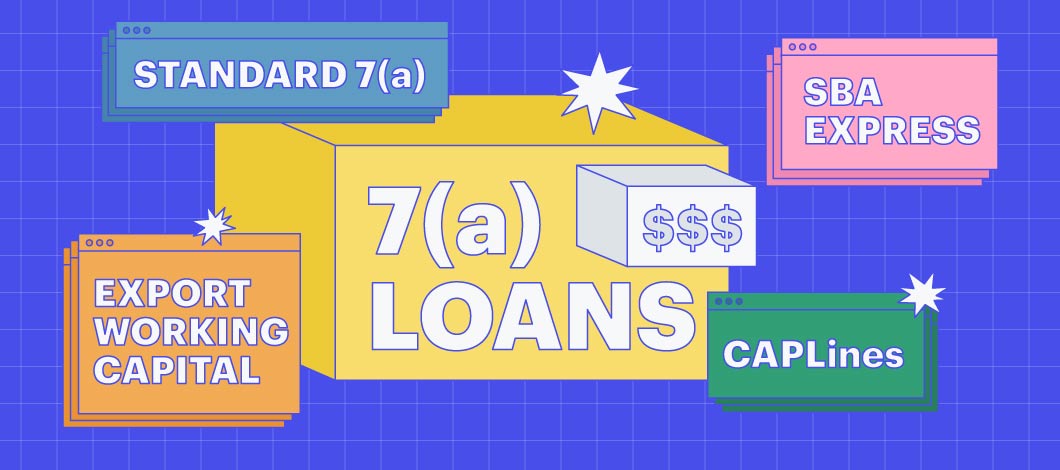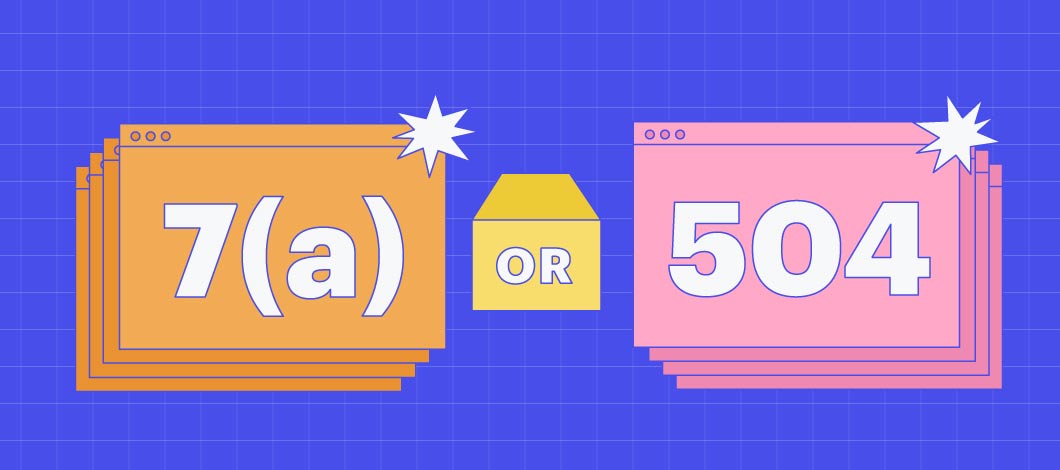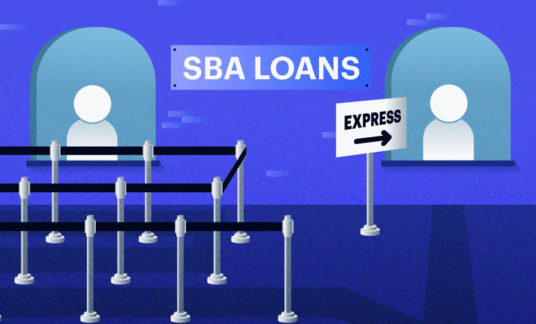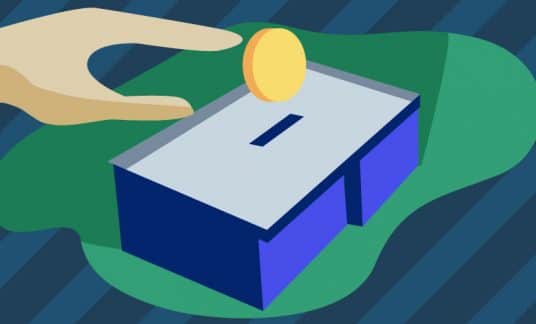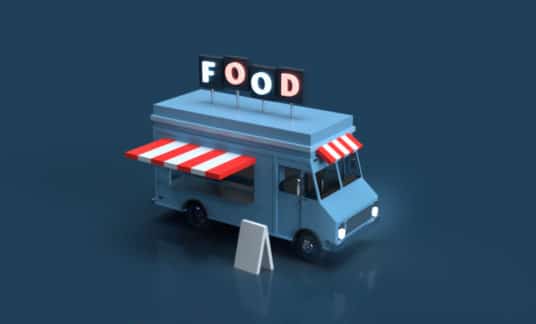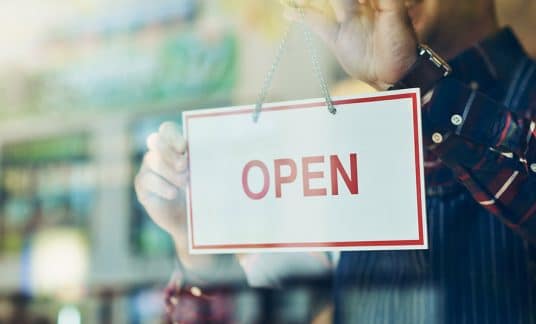If you’ve looked into the Small Business Administration’s (SBA) loan programs, you might be wondering which one is best for your small business. We’ll break down 2 of the most popular options — the SBA 7(a) vs. 504 — to help you decide which will fit your business’s needs.
SBA Loans: 504 vs. 7(a) Overview
Here’s an overview of the SBA 504 vs. SBA 7(a) features, loan rates, terms and more.
| SBA 504 Loan | SBA 7(a) Loan | |
| Maximum Loan Size | $5 million ($5.5 million for manufacturers) | $5 million ($350,000 for Express loans) |
| Loan Rates | Fixed rates; Third-party lender: Negotiable rate; CDC portion of the loan: Pegged to an increment above the current market rate for 5- or 10-year Treasury issues (totals approximately 3% of the debt; rate may be financed with the loan) | Fixed or variable; variable rates can’t exceed the Prime rate (7.5%) + a maximum of 2.25%- 4.75% in lender interest, depending on loan amount and maturity (or Prime + 4.5%-6.5% in lender interest for Express loans)* |
| Loan Terms | 10, 20 or 25 years (varies by use) | Up to 10 years for working capital and other fixed assets; up to 25 years for real estate (and up to 7 years for Express loans) |
| Down Payment | At least 10%, but could be up to 20% | 10%-20% |
| Collateral | Required for loans greater than $25,000 | Financed assets serve as collateral |
| Who Qualifies | Same requirements as 7(a), plus has a tangible net worth less than $15M and an average net income less than $5M after taxes for the preceding 2 years | For-profit businesses; shows good character, credit, management and ability to repay |
| Best Uses |
|
|
*As of Feb. 3, 2022
Both the SBA 7(a) and 504 loan programs are initiatives by the Small Business Administration to open access to affordable funding for small businesses. Getting approved for conventional bank loans can be tough (or impossible) for many owners, so the SBA guarantees a portion of these loans to mitigate the risk lenders take when working with small businesses.
Basic requirements apply to all of the programs, but most small businesses are eligible to receive SBA loans if they:
- Are a for-profit business operating within the U.S.
- Fall under SBA size standards for small businesses
- Have invested personal equity into the business
- Have exhausted other financing options, including conventional bank loans
- Have no previous delinquencies on government loans
Businesses that cannot receive loans include those that operate in gambling, lending and speculative businesses as well as companies that promote or partake in illegal activity.
If you and your business meet the required criteria and aren’t on the exempt list, you’ll also need to convince the SBA that they’re smart to invest in the future of your business. They’ll want to know what you need the money for and how you plan to use it to be successful.
There are a few different loan types, but the SBA 504 and 7(a) programs are the most popular for expanding a small business. Learning their similarities, differences, restrictions and how their terms can affect your financial future will help you find the perfect match.
Similarities of SBA Loans 7(a) vs. 504
In addition to basic eligibility requirements, these loan programs share some similarities. Keeping with the goals of the SBA, they offer flexible long-term repayment options with limited fees and lower rates than alternative lenders.
Obtaining one, however, is an exercise in patience. Though the application process is relatively straightforward, it can take upward of 90 days to receive approval and more time to acquire the funds. The exception is SBA Express loans, subsets of the 7(a) program, which promise application review within 3 days.
SBA 7(a) Loans Overview
When most people think of SBA loans, 7(a) loans come to mind. The 7(a) program consists of multiple loan types, but most have the same basic characteristics.
Types of 7(a) Loans
Within the SBA 7(a) program, there are several different types of loans:
Standard 7(a) Loans
SBA 7(a) loans are by far the most popular due to their versatility. A standard 7(a) loan can be used for working capital, debt refinancing, business acquisition and buying fixed assets, such as real estate and equipment.
Loan terms vary based on the qualifications of borrowers and how funds are used. Generally, working capital, machinery and equipment loan terms fall within the 5- to 10-year range. If the proceeds of the loan are used to purchase real estate, terms could extend up to 25 years.
You can acquire up to $5 million through the SBA 7(a) loan program. The SBA guarantees 85% of the principal for loans under $150,000 and 75% on loans over that value.
SBA Express Loans
SBA Express loans are designed to expedite the application process, so businesses that need money fast have access to it. Instead of waiting up to 90 days for approval, you could get an answer within 36 hours.
General SBA Express loans carry the same use restrictions as the standard 7(a) program, but max out at $350,000. They also have a lower guaranty — 50%.
Export Working Capital
Export Working Capital loans give owners selling internationally the option to get funding to support those sales. They do differ, however, because they offer working capital up to $5 million, with a 90% guaranty. Additionally, they work as revolving lines of credit with terms of 12 months or less.
CAPLines
CAPLines are meant to help your business meet its short-term and cyclical working capital needs. The 7(a) program provides 4 different types of these credit lines:
- Seasonal: For financing seasonal inventory or accounts receivable or, in some cases, increased labor costs
- Contract: For the cost of one or more contracts, sub-contracts or purchase orders, including overhead or administrative expenses
- Builders: For expenses related to the construction or renovation of a project
- Working: For short-term working capital and operating needs
CAPLines have maturity terms of up to 10 years except for Builders CAPLines, which have a maximum limit of 5 years.
SBA 7(a) Loan Rates and Fees
Interest rates for 7(a) loans are negotiated between the borrower and the lender and can be fixed or variable. Variable rates are capped using the current prime rate as a base.
| Loan Amount | Maturity < 7 years | Maturity > 7 years |
| $25,000 or less | Base + 4.25% | Base + 4.75% |
| $25,000-$50,000 | Base + 3.25% | Base + 3.75% |
| $50,000+ | Base + 2.25% | Base + 2.75% |
For SBA Express and Export Express loans, lenders can charge up to 4.5% over the prime rate for loans greater than $50,000 and 6.5% over the prime rate for loans of $50,000 or less. You can expect a fee of up to 3.75% based on the amount of the guaranty that the SBA places on your loan.
For Export Working Capital loans, there is no SBA maximum interest rate limit.
SBA 504 Loan Overview
The 504 loan program has a targeted purpose. You are only able to use funding in this program to purchase, improve or refinance fixed assets such as real estate or equipment.
The structure of these loans is also very different from their 7(a) counterparts, essentially acting as 2 loans to fund 1 project. SBA 504 loans require a down payment of at least 10%, after which a Certified Development Company (CDC) licensed by the SBA funds up to 40% of your project cost, up to $5 million.
A third-party lender writing a 504 loan covers up to 50% or more of the total loan. The loan amount, rate and terms are up to the lender’s discretion, though interest rates are capped.
The primary purpose of this initiative is to stimulate the economy, so there are strict job-creation goals you must meet to obtain a 504 loan. With exceptions for some small manufacturers and those who will use the funding to achieve certain community development goals, you must create or retain 1 job for every $65,000 you borrow.
Terms, Rates and Fees for 504 Loans
Repayment terms for 504 loans will be based on what you are using the funding for. If you’re acquiring or renovating real estate, the CDC portion of the loan will have a length of 20 or 25 years. For equipment financing, the maturity terms are 10 years.
The borrower can negotiate rates and fees from the third-party lender, but they’re capped like their 7(a) counterparts. Still, they tend to be favorable since the SBA is taking away a lot of the risk by offering up money through CDCs.
CDCs offer fully amortized, fixed-rate loans to help you keep your finances stable. Interest rates for 504 loans change monthly based on the United States Treasury rates but are fixed to the current number on the day you sign.
Your CDC will then impose a small fee (less than one-half of 1%) on top of that rate, generally bringing it up to 3-4%.
A guaranty, CDC and servicing agent fee will be rolled into your monthly payment and paid off over the life of the loan. The total rates and fees are generally lower than their 7(a) counterparts and do not change as the total amount of the loan grows.
SBA Loans 7(a) vs. 504 FAQs
By now, you understand the differences between SBA 7(a) loans vs. 504 loans, but here are a few answers to questions you might still have.
Why does it seem like the 7(a) program is more common than the 504?
When it comes to SBA programs, often conventional lenders only offer the 7(a) as an option. If you’re interested in the 504 loan program, you can find a local CDC using the SBA site search.
When would it be better to take out a 7(a) vs. 504 loan?
If you need to finance a business purchase or need working capital, a 7(a) loan is the SBA option to consider since SBA guidelines don’t allow 504 loans to be used for those purposes.
When might it be better to take out a 504 vs. 7(a) loan?
An SBA 504 loan only requires the property being acquired to be used as collateral; there is no lien placed on a personal residence or outside collateral. As such, when multiple are partners involved with unequal assets and equity, the 504 could be a better option than the 7(a) loan, which requires collateral. The additional collateral required in the 7(a) program could burden the partner with greater value to pledge.
Can a 7(a) loan be used to purchase commercial real estate?
Yes, though there are higher guaranty and program fees with the 7(a) loan, and banks are unable to finance those fees. This could make it much costlier upfront. Additionally, a lien on the borrower’s home, business or both are generally placed if a 7(a) loan is financed at 90 percent loan to value. However, 504 loans don’t require liens on personal residences.
SBA 7(a) vs. 504 Loans: Choosing the Right Fit
Now that you have an idea of the details and uses of these loans, it’s time to consider which SBA loan is the best choice for your business.
If you need money for inventory, starting your export company, acquiring a business or refinancing general business debt, 7(a) loans are your only choice.
SBA 504 loans are tailored for buying or upgrading real estate and financing equipment, giving them better rates and fees for those purchases. That said, 7(a) loans can also be used for these purposes.
Alternatively, if you need quick cash to keep your business afloat, obtaining an Express loan under the 7(a) umbrella is a great option. And for export businesses, the SBA offers up to a 90% guaranty, typically leading to favorable terms and higher approval rates.



